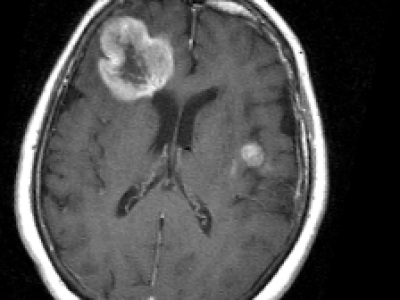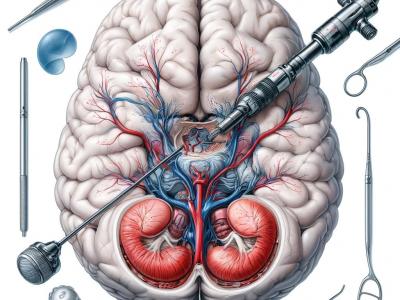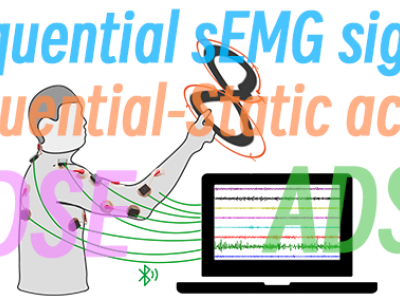Health

Wild-SHARD presents a novel Human Activity Recognition (HAR) dataset collected in an uncontrolled, real-world (wild) environment to address the limitations of existing datasets, which often need more non-simulated data. Our dataset comprises a time series of Activities of Daily Living (ADLs) captured using multiple smartphone models such as Samsung Galaxy F62, Samsung Galaxy A30s, Poco X2, One Plus 9 Pro and many more. These devices enhance data variability and robustness with their varied sensor manufacturers.
- Categories:
 730 Views
730 ViewsThis dataset comprises a comprehensive collection of augmented MRI images of brain tumors, organized into two distinct folders: 'Yes' and 'No'. The 'Yes' folder contains 9,828 images of brain tumors, while the 'No' folder includes 9,546 images that do not exhibit brain tumors, resulting in a total of 19,374 images. All images are in PNG format, ensuring high-quality and consistent resolution suitable for various machine learning and medical imaging research applications.
- Categories:
 1140 Views
1140 ViewsThis dataset consists of 462 field of views of Giemsa(dye)-stained and field(dye)-stained thin blood smear images acquired using an iPhone 10 mobile phone with a 12MP camera. The phone was attached to an Olympus microscope with 1000× objective lens. Half of the acquired images are red blood cells with a normal morphology and the other half have a Rouleaux formation morphology.
- Categories:
 1018 Views
1018 ViewsThis dataset comprises 1718 annotated images extracted from 29 video clips recorded during Endoscopic Third Ventriculostomy (ETV) procedures, each captured at a frame rate of 25 FPS. Out of these images, 1645 are allocated for the training set, while the remainder is designated for the testing set. The images contain a total of 4013 anatomical or intracranial structures, annotated with bounding boxes and class names for each structure. Additionally, there are at least three language descriptions of varying technicality levels provided for each structure.
- Categories:
 422 Views
422 ViewsEarly detection of kidney illness can be achieved by training machine learning algorithms to discover patterns in patient data, such as imaging, test results, and medical history. This will enable rapid diagnosis and start of treatment regimens, which can improve patient outcomes. With 98.97% accuracy in CKD detection, the suggested TrioNet with KNN imputer and SMOTE fared better than other models. This comprehensive research highlights the model's potential as a useful tool in the diagnosis of chronic kidney disease (CKD) and highlights its capabilities.
- Categories:
 1203 Views
1203 Views
This study presents a comprehensive dataset to analyze risk factors associated with cardiovascular disease. The dataset comprises various patient attributes, including gender, age, total cholesterol, HDL (high-density lipoprotein), triglycerides, non-HDL (non-high-density lipoprotein), NIH-Equ-2, and direct LDL (low-density lipoprotein). These attributes comprise 25,991 patient data, robustly representing a large population sample.
- Categories:
 592 Views
592 Views
Heart diseases are one of the most common types of diseases that have a very high mortality rate. The best method of accurate diagnosis of coronary artery stenosis is angiography, which has few side effects and is relatively expensive. The data of this study were collected from the Philips Allura Xper FD10 angiography machine of the Cath Lab department of Erfan Niayesh Hospital in Tehran from September 1, 2023 to January 1, 2024. 200 angioplasty clips and 200 normal angiography clips were taken from the left and right coronary arteries.
- Categories:
 166 Views
166 Views
The COronaVIrus Disease of 2019 (COVID19) pandemic poses a significant global challenge, with millions
affected and millions of lives lost. This study introduces a privacy conscious approach for early detection of COVID19,
employing breathing sounds and chest X-ray images. Leveraging Blockchain and optimized neural networks, proposed
method ensures data security and accuracy. The chest X-ray images undergo preprocessing, segmentation and feature
- Categories:
 199 Views
199 ViewsWe introduce an online-offline Iraquian hand-drawing dataset for early Parkinson’s disease detection, exclusively collected using smartphones, thus eliminating the need for specialized equipment like digitizing tablets and pens. Our dataset comprises data from 30 healthy individuals (17 men, 13 women) with an average age of 56 years (SD = 6.12) and 30 PD patients (23 men, 7 women) with an average age of 60 years (SD = 4.91), gathered at Marjan Hospital in Hilla, Babil Governorate, Iraq.
- Categories:
 591 Views
591 Views




